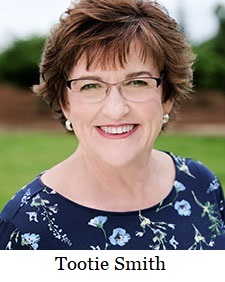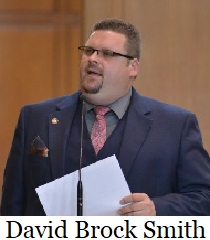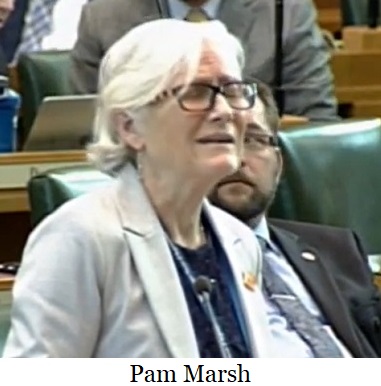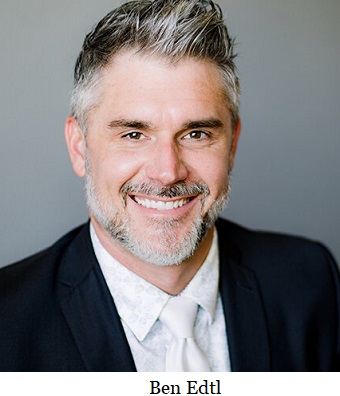
On this day, September 1, 1836, Protestant missionary Dr. Marcus Whitman led a party to Oregon. His wife, Narcissa, was one of the first white women to travel the Oregon Trail.
 Post an Event
Post an Event
| Benton County Republicans’ Private Fundraising Event, “Bent-on Boots and Bling” with Trey Taylor |
| Friday, September 5, 2025 at 5:00 pm |
| Featuring Trey Taylor
Music Private Event
Friday, September 5, 2025 5:00-5:30 pm VIP Reception
5:30-8:00 pm Heavy Appetizers,
Auction, Concert
Red: $750 VIP Reception
Front Row Table Sponsor
White: $500 Table Sponsor
Blue: $50 per person
Limited Seating. Get Yours Now!!!
Support Local
Dress up: Bling, Cowboy, Patriotic Benton County Republican
FUNDRAISER
www.BentonGOP.org
Get your tickets today at:
https://www.bentongop.org/event-details/benton-county-republicans-fundraiser/form
About Trey:
Trey is the youngest African American Man in Country Music History. The Denver Post wrote
"It's impossible to miss his enthusiasm. With a fondness for cowboy boots, gaudy colors and dazzling jewelry, Trey Taylor could stand toe to toe with any of the Pop, Country or even Rap
contemporaries of his generation.“ |
| Trysting Tree Golf Club, 34028 NE Electric Rd., Corvallis |
This saga doesn’t rise to the level of an Agatha Christie novel, but it’s a beauty
A 24 page tell-all booklet,
The Truth About The Trail showed up in mailboxes throughout Yamhill County on Friday.
The booklet listed dozens of never before printed emails obtained through public records requests bringing transparency to what some are calling a conspiracy. Published by Oregon Family Farm Association of Tigard, the booklet shines a light on individual elected and paid staff at the top of Yamhill County government and the private citizens who succeeded in exploiting those officials weaknesses. As the booklet demonstrates, the aforementioned knowingly broke the rules and ignored the law in a display of arrogance not normally found in this county still dominated by heartland values.
The contest between bureaucrats hell bent on building a bike path through farmland and plaintiff farmers protecting their property rights has played out in the Land Use Board of Appeals five times since the first appeal was filed in June of 2018. The county lost every legal action, repeatedly ignoring LUBA rulings using tax dollars to cover their legal fees while hoping to exhaust farmers legal funds. When the fifth and decisive action in June of 2020 required the County to permanently ceased activity and cover the plaintiff’s legal fees of $48k the legal game was over.
What sets this booklet apart from previous articles calling attention to the conflict is the detail of emails obtained through public records requests. The quantity and character of these emails demonstrates an intricate web of elected officials and non-elected leaders in league with Friends of the Yamhelas-Westsider trail plotting one extreme measure after another in a near fanatical defiance of the rule of law, or toward the destruction of individual business owners. As they racked up loss upon loss, Trail proponents resorted to character assassination and political retaliation.
A D V E R T I S E M E N T

A D V E R T I S E M E N T
The farmers were painted as a small and extreme special interest group. There are over 37,000 farms and ranches in Oregon. They make up a large primary industry that not only brings in outside dollars to Oregon, but aids in the U.S. balance of payments. We need more ‘small special interest’ groups like that.
County Counsel Todd Sadlo, who misrepresented too many details to higher authority was the first casualty. He took early retirement after a complaint filed with the Oregon Bar has morphed into an investigation. Sadlo asked County Grants Administrator Carrie Martin to get an engineer’s statement stating the Trail bridge could hold a fire truck as he sought to sidestep a LUBA remand requirement.
Martin, panicked by an ODOT letter warning of grant termination was caught misrepresenting vital details of construction of that bridge. Her angst manifest itself in unauthorized overtime expenditures intended to cover up differing claims of completion dates. Rather than show contrition, she sued the commissioner making her misdeeds known by claiming harassment. That suit subsequently ended in a full exoneration of the commissioner. Martin’s shield was temporary. Misinformed citizens caught up in the emotion of it all are attempting to recall the commissioner. As their effort stumbles they have begun paying people to seek signatures on a petition.
This saga doesn’t rise to the level of an Agatha Christie novel, but it’s a beauty. People only learn from their mistakes if they first acknowledge them. With the vindictive recall effort of the exonerated commissioner still in play it is doubtful that any such acknowledgement is in the cards any time soon.
--Tom Hammer| Post Date: 2021-10-20 16:38:30 | Last Update: 2021-10-20 17:06:47 |
She might not be the right cheerleader to encourage Oregonians
Amid her own echos, a maskless Oregon Governor Kate Brown thanked Oregonians for getting the vaccine and encouraged those who have not, to get more information and get vaccinated. In previous video appearances, the Governor has made a point of appearing on camera first wearing a mask and then removing it as she began to speak.
As if you credit herself for her mandates on educators, health care workers and state employees, she called them out by name.
"I want to take a moment to thank all the Oregonians who took the time to get vaccinated. By taking this step, you are protecting yourself your co-workers and your communities.
From health care workers to K through 12 educators to first responders and state employees, thousands more Oregonians have been vaccinated to protect against COVID-19 over the last several weeks."
Some pundits and insiders have pointed out that Kate Brown has very low approval ratings and might not be the right cheerleader to encourage Oregonians -- many of whom are tired of the mask and vaccine mandates and the lockdowns -- to get the vaccine. She plead with the unvaccinated:
"If you are not yet vaccinated please call your doctor or health care provider to get your questions answered. Ask a friend who's been vaccinated about their experience and why they got the shot. Vaccines are safe, effective and it's never been easier to get an appointment."
2,603,408 people in Oregon
have been vaccinated, which is 76.5% of the 3,403,051 people in Oregon who are 18+ years of age.
--Staff Reports| Post Date: 2021-10-20 10:56:22 | Last Update: 2021-10-21 10:57:48 |
It should give pause to other cities
Cities are looking at new legislation and looking over their shoulders at Governor Brown’s Executive Order 20-04 of 45% reduction in GHG emissions from 1990 levels by 2035, and 80% by 2050.
HB 2021 then enshrined the goals into law for retail electricity providers to reduce greenhouse gas emissions associated with electricity sold to Oregon consumers to 80% below baseline emissions levels by 2030, 90% below baseline emissions levels by 2035, and 100% below baseline emissions levels by 2040.
HB 2062 establishes new energy efficiency standards for appliances and certain water fixtures, and
HB 2180 requires certain newly constructed buildings to be electric vehicle ready.
What the city of Salem -- run by Mayor Chuck Bennett -- is doing should give pause to other cities. Salem unveiled its
Climate Action Plan after a year-long process by a 35 member task force. They started by collecting residents’ vision for a climate-smart city of the future by 2050. A vision of utopia gave way to recommendations to tackle climate change locally by proposing major changes in how we travel, design neighborhoods, and use energy, among other approaches to reduce greenhouse gas emissions, prepare the community for impacts, and ensure a transition to an equitable and climate-smart future. The plan is a roadmap to exceed Governor Brown’s
Executive Order 20-04 to reduce community-wide GHG emissions by 50% by 2035 (from the baseline year of 2016) and to be carbon neutral by 2050.
A D V E R T I S E M E N T

A D V E R T I S E M E N T
To measure the impact of local GHG reduction efforts, the plan forecasts future emissions with and without local action. Changing the American Dream into the American Nightmare takes drastic action. There are a few good ideas, like carbon sequestration of plants and trees. Of course, onsite solar and halt growth in natural gas is what HB 2021 is all about. But no thought is given to how this will impact business and discourage new startups and thus affect growth.

How long have we heard walk or bike more and drive less? The goal is to increase walkways, and bike paths. Then double electric vehicles and quadruple transit ridership on electric buses to reduce traffic in Salem by 10 percent. Traffic measurements are taken from before the pandemic in 2016, so there should have already been a reduction through working from home and lockdowns. While you’re limited from using your vehicle, don’t invite out-of-town guests or hold business conferences. The goal is a 40 percent reduction in traffic coming into and out of Salem. Businesses that depend on tourism will have a harder time staying afloat.
All those goals are only halfway to the target. To meet the remainder, they propose halting all combustion engine traffic, remove all fossil fuel-derived from natural gas in existing homes and buildings, and ensure a 100% renewables-only electricity grid. Achieve a zero waste through circular economy, compost and recycling, including capture of wastewater emissions and halt septic emissions by joining wastewater treatment.
Financing proposed will assess as many areas as the goals – parking fees, gas tax, and residential energy audits are at the top of the list. They also propose a trip reduction ordinance for employers to reduce single-occupancy trips. Revise land use plans to allow for more dense development promoting walkable neighborhoods. Implement a reward system that requires property owners to improve low-performing buildings.

If you envision the city plan on a smaller scale one could visualize a gated community where only one electric vehicle is permitted per house and there is a checkpoint at the gate to limit those coming and going. Each vehicle is monitored for use. The houses would be on an electric grid with limited watt and water use. Waste water and garbage monitored for what you are consuming. The behavior change will get you to compete at reducing your emissions, which means your every move will be tracked. If you don’t go along, there are programs to change your behavior. The new behavior is to buy less stuff or buy second-hand. Actions for individuals are to reduce driving trips and avoid unnecessary air travel, eat a plant-based diet, conserve energy and water and reduce waste. And while you’re feeling confined, like a slave, they suggest you pursue actions that address intersectionality and integrate social justice into your environmental work and daily actions.
The work was done using Verdis Group, out of Omaha, Nebraska. It is curious why the URL reads “California.†Is this simply a rewrite changing a few details? They use the EPA’s Local Greenhouse Gas Inventory Tool to gather inventory from the 2016 calendar year. It seems that gains Salem has made already during the pandemic aren’t being measured, perhaps to give a more compelling picture? They also use U.N. models for climate change, which may explain the more than 100% jump in warming from 2040 through 2069. How free can you be when every move is measured?
The public comment period is open until November 5, 2021, at 5 p.m. Comments will be accepted online at the
Salem Climate Action Plan website.
--Donna Bleiler| Post Date: 2021-10-20 06:46:59 | Last Update: 2021-10-20 10:05:27 |
“The failures under Kate Brown’s leadership continue to stack upâ€
On Monday night, Kate Brown’s Department of Administrative Services sent detailed vaccination statuses of tens of thousands of state workers to reporters from the Salem Statesman Journal and the Portland Oregonian.
The Senate Republican Leader Fred Girod (R-Lyons) released the following statement:

“I have been opposed to this overreach since the day Kate Brown announced it. Government should never coerce people into having medical procedures let alone keep track of this information. It proves to Oregonians they should not trust the government with their private health information or with this much power over their day-to-day lives.
“The impacts of Kate Brown’s overreaches are proving to be severe. Staffing shortages across the state in essential services, like police, teachers, and hospital staff are going to have enduring negative consequences on the safety of Oregonians. Now, citizens must worry if their private medical history will become public. This kind of breach of trust will further erode the public’s faith in government.
“The failures under Kate Brown’s leadership continue to stack up. Oregonians deserve better.â€
--Staff Reports| Post Date: 2021-10-19 17:17:55 | Last Update: 2021-10-19 17:42:29 |
Why should California get to have all the fun?
There are two sides to every scale. On one side you have uninterrupted electricity covering all situations. On the other side are customers that want to pay as little as possible for their electricity needs. The balancing act in the past has been the job of utilities monitored by Public Utilities Commission as an arm for customers. Over the last few legislative sessions, the PUC seems to have turned into the Political Utilities Commission reducing the consumer protection arm.
Rolling blackouts has been publicized as a risk of
HB 2021, a bill introduced in the last legislative session by Representatives Pam Marsh (D-Ashland), Khanh Pham (D-Portland), Senators Lee Beyer (D-Eugene), and Michael Dembrow (D-Portland). Seemingly every virtue-signaling Democrat jumped in as a co-sponsor. The bill sets a path for electricity providers to reduce emissions to 100% (80% by 2030, 90% by 2035 and 100% by 2040) below baseline by 2040, with intermediate targets. That goal is along with requirements for electric companies to develop a Clean Energy Plan meeting supply mix standard. The two together will not only drive-up costs, but make it more difficult for power companies to provide reliable energy in peak seasons.
Our neighbors to the south received their second taste of rolling blackouts this summer. The California Energy Commission laid blame in three main areas:
- A climate change-induced extreme heat storm across the West that spiked demand beyond current electricity demand planning targets.

- Growing amounts of renewable resources online, especially solar, that require other resources to help meet demand in the early evening hours when the sun goes down.
- Some practices in the day-ahead energy market exacerbated the supply challenges.
The first rolling blackouts took place in 2001, which almost affected the entire northwest. It was cause by drought conditions that reduced hydropower causing BPA to force 5,000 aluminum workers out of work to preserve power – an economic blow to the northwest. Oregon is currently struggling with the effects of drought
delivering water to Klamath County experiencing dry wells. Proposed dam removals further threaten their source of water and power.
The
Northwest Power and Conservation Council, authorized by Congress in 1980 under the Northwest Power Act, gives northwest states a voice in energy plans while protecting fish and wildlife resources. The Council has done an about face going from power plans driven largely by least-cost energy efficiency with only a modest development of renewable power in 2016 to clean-energy policies as a result of the aggressive pursuit of the Green New Deal and the climate change agenda. That resulted in the retirement of coal-fired generators, uncertainty about the role of new natural gas-fired generation, and a decrease in cost of utility-scale solar and wind generators. However, the Act directs the Council to give priority to cost effective energy efficiency, followed by cost-effective renewable resources. Not so easy when forces are mandating a zero-emission plan that we see in
HB 2021.
The Council acknowledges, “Increasing our dependence on sunshine and wind to make electricity has risks – primarily the risk of reduced output when the sun goes down and the wind stops blowing. Maintaining an adequate and reliable power supply will be challenging.†The Council’s
2021 Northwest Power Plan draft is available for
comment by November 19, 2021. The draft plan incorporates the results of several energy models, recently enacted public policies, advances in technology, and a blend of climate change assumptions and economics in preparing the 20-year plan and its action plan, which covers 2022 through 2027.
A D V E R T I S E M E N T

A D V E R T I S E M E N T
Will Oregon see rolling blackouts? Not if the Council’s suggestions are followed by increasing each utility acquisition to between 750 and 1,000 average megawatts by the end of 2027 and a minimum of 2,400 average megawatts by 2041, and the region needs to acquire 3,500 megawatts of renewable resources by 2027. That could be a tall order considering the restrictions in
HB 2021, and Governor Brown taking steps against it.
Governor Brown filed a preliminary injunction with the U.S. District Court over the management of the Federal Columbia River System. If the court approves her injunction, it would require lower Snake River dams and Columbia dams to spill water, which will significantly impact the hydroelectric power. The first spill is projected to cost more than $100 million a year resulting in a 5% increase in rates by Bonneville Power Administration. Additional spills will substantially increase greenhouse gas emissions putting a heavier burned on all utilities to meet the goals of
HB 2021 to be 100 percent carbon-free electricity below baseline emissions by 2040. What is hidden in the bill is the ban on expanding or constructing power plants that burn natural gas or fossil fuels, which makes up 21.1 percent of electric energy consumption in Oregon.
In the past year cities around the state have experienced power outages for various reasons including extreme weather and public safety power shutoffs. It is not hard to see why Oregonians are thinking rolling blackouts are inevitable. And it doesn’t take much to see that
HB 20211 can easily overload the grid without reliable backup systems. Will Oregonians be willing to pay more for less reliable electricity?
--Donna Bleiler| Post Date: 2021-10-19 06:01:33 | Last Update: 2021-10-18 10:58:44 |
Cherries and hazelnuts crack the top 10
The 2020 crop year is a result of the 37,200 farms and ranches that make up Oregon’s agricultural community. Oregon is home to more than 225 commodities, everything from cattle to cherries to hazelnuts and hay. The ongoing COVID-19 lockdowns presented several new challenges to agriculture statewide. Growers and producers responded and adapted quickly to
meet the needs of Oregonians, despite mandates issued from the state government.
Oregon’s greenhouse and nursery industry experienced a boon with value of production topping one billion dollars for a second year in a row. Industry experts say that people taking up gardening and landscaping boosted sales nationwide. Historically, greenhouse and nursery and cattle and calves remain two of the top commodities by value in production.
New to Oregon’s top 10 are cherries and hazelnuts. Cherries experienced a 78 percent increase in the value of production. High demand for Oregon cherries meant higher prices for growers in 2020. Oregon is currently the third largest producer of cherries in the nation, supplying 17 percent of the U.S. market.
A D V E R T I S E M E N T

A D V E R T I S E M E N T
Hazelnuts had a record year with a nearly 24 percent increase in production and a nearly 57 percent increase in value of production. Hazelnut acreage has grown over the past ten years from about 30,000 acres to over 80,000 acres. Nearly 100 percent of the hazelnuts produced commercially in the U.S. are grown in the Willamette Valley.

Oregon’s top 10 valued commodities by value for the 2020 crop year are:
- Greenhouse & nursery, $1,188,911,000
- Cattle & calves, $587,848,000
- Hay, $569,160,000
- Milk, $557,348,000
- Grass seed, $458,367,000
- Wheat, $273,760,000
- Potatoes, $216,810,000
- Grapes for wine, $157,900,000
- Cherries, $133,826,000
- Hazelnuts, $132,300,000
A majority of Oregon’s agricultural commodities in the top twenty saw an increase in value of production including eggs (+29%), onions (+9%), potatoes (9%), sweet corn (+8%), Dungeness crab (+7%), hops (+4%), Christmas trees (+2%), apples (+1%), and milk (+1%).
On the downside, grapes for wine experienced a decrease of 34%, while hay (-16%), blueberries (-11%), grass seed (-11%), pears (-10%), cattle & calves (-6%), and wheat (-3%) also recorded production value decreases. Rounding out the top twenty ag and fisheries commodities by value of production:
- Blueberries, $119,648,000
- Onions, $118,665,000
- Christmas trees, $106,912,000
- Pears, $97,552,000
- Corn, grain, $77,542,000
- Hops, $74,812,000
- Eggs, $72,999,000
- Dungeness crab, $72,643,709
- Sweet corn, $41,034,000
- Apples, $39,208,000
These newly released statistics are primarily from USDA’s National Agricultural Statistics Service (NASS) compiled in collaboration with Dave Losh, Oregon State Statistician. Estimates were also provided by the Oregon Department of Agriculture, Oregon State University, Oregon Department of Fish and Wildlife, and the Oregon Wine Board.
Industry insiders noted that hemp is not included in the agricultural commodities list. Beginning in October, NASS will begin collecting information on the acreage, yield, production, price, and value of hemp in the United States. Results will be available in 2022.
--Ben Fisher| Post Date: 2021-10-19 01:33:32 | Last Update: 2021-10-19 19:46:59 |
“Joe Biden and Nancy Pelosi will do anything to advance their liberal agendaâ€
Former Oregon National Guard soldier and U.S. Congressional Candidate for the 4th Congressional District
Alek Skarlatos announced he raised over $512,000 for the third quarter, which is his first full fundraising quarter of the campaign,
outpacing his presumed opponent long-time incumbent, Peter DeFazio (D-Springfield).
This news follows the recent announcement by the National Republican Congressional Committee that Alek Skarlatos was named as one of their top candidates for their 2022 Young Guns recruitment program.

“I am incredibly thankful to have the support of so many people, as Southwest Oregon deserves conservative leaders who will fight for them,†said Skarlatos. “Joe Biden and Nancy Pelosi will do anything to advance their liberal agenda - which includes deliberately ignoring the crisis along our Mexican border and this $3.5 trillion tax and spend infrastructure bill championed by Peter DeFazio - and this is just the start of a long campaign to stop their far-left agenda.â€
Skarlatos is a former Oregon National Guardsman, who served in Afghanistan. In 2015, while traveling on a train bound for Paris, Alek, along with four others, jumped into action to stop an Islamic Terrorist who tried to open fire on a passenger train. His heroism earned him several awards and medals around the world including, the United States' Soldier’s Medal. Skarlatos was defeated by multi-decade incumbent Peter DeFazio (D-Springfield) in the 2020 election.
Oregon's 4th Congressional district changed mostly on the Northern counties. The loss of Linn County and the addition of Lincoln County turned the district slightly more liberal and Democratic than the previous 4th Congressional district.
--Staff Reports| Post Date: 2021-10-18 12:01:21 | Last Update: 2021-10-18 19:17:55 |
Much of the work that the state does, it has to be staffed in an immediate and on-going basis
With the announcement of
Executive Order 21-29 came Oregon's vaccine mandate for all state employees, contractors and volunteers. Any employee who fails to provide proof of vaccination "will face personnel consequences up to and including separation from employment." Mandates for health care workers and educators are also in place.
Legal challenges still loom. Though the company continues to dispute it, vaccine mandates
brought Southwest Airlines to it's knees as they cancelled flights and scrambled to get back to a normal operating level, and have arguably
driven staffing shortages in Oregon medical facilities as many health care workers refuse the vaccine, the state pushes forward with it's mandate.
There has been some speculation that the vaccination mandate is more about power than about preventing disease. Many state workers still work from home. Many work in non-public facing jobs. Yet, the mandate makes no distinction. Some have wondered if the mandate is targeted at anti-vaxxers -- Trump supporters and religious nuts -- who need to be driven from state government. In fact, we'll probably never know, because the Governor's COVID Council has a very poor track record with transparency.

Governor Brown's announcement of the mandate on August 13 appeared to drive a small blip on the graph of vaccine administrations driving speculation that while some prefer to not take the vaccine, their careers as state workers outweighed these concerns. In a meeting of the Oregon Health Policy Board, OHA Director Pat Allen appeared to soften the mandate, telling state agencies
not to fire employees over the deadline, but to keep them away from public-facing work.
Much of what the state does is necessary, but can be allowed to backlog, and for this kind of work, the state can absorb even a sizeable worker shortage. But for much of the work that the state does, it has to be staffed in an immediate and on-going basis.
For this kind of work, the state cannot understaff. This would be true of law enforcement, including corrections employees, state health care and mental health workers and care workers and contractors. It remains to be seen if there will be a problem in these fields and if so, how the state will respond. The Oregon National Guard has already been called out to fill gaps in the health care system. Perhaps they will be used to fill gaps in state government, but they can only go so far.
--Staff Reports| Post Date: 2021-10-18 09:41:54 | Last Update: 2021-10-18 12:25:54 |
This building is now the “same as your private homeâ€
Without comment or answer to the Northwest Observer’s questions, it appears due to the September 29, 2021, decision by the Appeals Court related to mask wearing as “nonmandatory recommendationsâ€, the Facility Director, Jeff Jorgensen, captured the reason for any order given to the citizens by Clackamas County Commissioners and their legal counsel, Steve Markour, in this building, is that this building is now the “same as your private homeâ€.
This government building houses or at least use to house hundreds of government employees. Many government employees continue to stay at home while now elected government officials call these government buildings “home†and their “private propertyâ€, now the move is to claim they can eject anyone they want without reason, cause, or law?
October 14, 2021, the Northwest Observer sat for 45 minutes in front of commissioners Tootie Smith, Mark Shull, Paul Savas, counsel Steve Markour during the Clackamas County Commission’s meeting mask free until the moment the public comment session began. Jorgensen approached the reporter holding in his hand what looked like some head gear contraption from 2001 Space Odessy. Because of the appeals court decision is that the reason Jorgensen never mentioned the “deadly virus†or the “emergency†or “the pandemic†and had no qualms with shaking the reporter’s hand? Now the issue has become simply that these buildings are the same as “your private home�
The Northwest Observer's questions not answered by Chair, Tootie Smith, commissioners Mark Schull, Paul Savas and county counsel Steve Markour submitted via email include as follows:
- Do the four of you agree with the facility director's statements?
- Before I write my news article on last night's meeting I would like from your county counsel, Steve Markour, the law. Not Governor Kate Brown's and OHA "rules", "mandates", "recommendations", "guidance", "requirements", "suggestions", "orders", "edicts", “restrictions†or comments the governor made on TV to the public (and since September 29th Appeals Court "nonmandatory recommendations" comment), but the law, starting with the Constitution of the United States, the Oregon Constitution, Federal Civil Rights laws and Oregon law including, but not limited to ORS 401.165(5) and the Oregon Constitution Article IV, Section 21.
- Smith, Shull, Savas and Markour comments, please, on the governor's position as opined through her AAG Michael Casper at the Appeals Court on September 29, 2021.
- Do the four of you agree with the court's comments on "nonmandatory recommendations"?

- Commissioners Smith, Shull, Savas and county counsel, Steve Markour, were in attendance and saw the Northwest Observer reporter sitting in full view of everyone mask free for 45 minutes. Comment from all, please, as why the reporter was only approached about wearing some kind of 2001 Space Odessey head covering when the public comment session started?
- Given what looked like Chair Smith’s history in the public record in standing up for the Constitutional rights of her constituency and the citizens of her county what influenced her this night to have everyone masked up?
On November 19, 2020 Clackamas County Commissioner
Tootie Smith said, â€How dare Governor Brown think she’s going to come out, she’s going to send the police into people’s homes and arrest them and fine them for having a Thanksgiving meal with their family, while at same time she lets rioters and anarchists destroy downtown in the city of Portland. That’s hypocrisy.â€
On July 28, 2021, Commissioner Smith
continued her defiance. “As the Delta variant continues to rise in Oregon, Clackamas County chair remains staunch in her defiance of virus restrictionsâ€
A D V E R T I S E M E N T

A D V E R T I S E M E N T
And on August 12, 2021 Commissioner Smith
continued to uphold her consistent stance. “This week, Governor Brown issued a mask mandate to all indoor buildings yet said local authorities would not be charged with enforcement. My question to her is this: if it’s not enforced, how is it a mandate?†Smith asked.â€
Oregonians know more and more now after a year and a half of listening to
Governor Kate Brown’s pinball edicts on television that Kate Brown’s, OHA’s and OSHA’s “rules cannot violate lawâ€, and more and more citizens wonder when their elected officials will also learn that civics lesson.
--Margo Logan| Post Date: 2021-10-17 11:13:57 | Last Update: 2021-10-17 11:38:30 |
“It’s not a mandate, you just can’t workâ€
Free Oregon’s
Emergency Motion for Stay against the Oregon Health Authority and the State of Oregon for OAR’s
333-019-1010 and
1030,
was denied by Appellate Court Commissioner Theresa Kidd. The Commissioner’s job is to determine a case’s merit and likelihood of success prior to being presented to a judge.
According to the suit,
The issues presented in this case turn on what are arguably some of the most impactful and harmful temporary administrative rules that have ever been adopted by an agency because they force potentially hundreds of thousands of individuals to undergo a medical treatment against their wishes or else be deprived by a state actor of their job, their income, and their very means of livelihood. A failure to stay these
Rules will leave Petitioners and those individuals without the ability to provide for their families. The Petitioners have filed an emergency motion because Petitioners, together with hundreds if not tens of thousands of other Oregonians, will be imminently terminated from their public and private employment in their chosen professions unless they subject themselves to the false choice of succumbing to an
unwanted, intrinsically coercive, unreasonable medical intervention with unknown long-term risks, that is likely in violation of state and federal law, the Oregon Constitution, and the United States Constitution. The United States Supreme Court has ruled that a “forcible injection … into a nonconsenting person’s body represents a substantial interference with that person’s liberty[.]â€
Ben Edtl, director of
Free Oregon, the organization which supported the lawsuit said, "We argued that the COVID-19 vaccines are experimental and not FDA approved and, therefore cannot be mandated according to the Emergency Use Authorization. We even provided the court with the actual FDA “approval†of the Comirnaty vaccine, to prove our point, alongside the federal government’s EUA. She says the State isn’t mandating which vaccines are to be taken, just that nurses, teachers and government workers must be vaccinated against Covid-19."
In what some are calling a circular argument justifying the decision that was identical to the State lawyers’ positions that on the one hand this is not a mandate while on the other hand we are experiencing a state of emergency, due to the pandemic, and that the State of Oregon has every legal right to mandate experimental vaccines. The determination of Commissioner Kidd was that the State would be likely to prevail.
The likelihood of success factor, together with the risk of harm to the public if a stay is granted, dispositively weighs against granting a stay in this case. Even assuming that petitioners have made a sufficient showing that they will be harmed if a stay is denied, and despite petitioners' urging that the public will be harmed by the vaccine mandate itself, the court agrees with the state that a stay would be harmful to the public. As all involved are aware, this case arises during a pandemic. Since its emergence, the coronavirus has spread throughout the world and COVID-19 has caused hundreds of thousands of deaths in this country. As the rules themselves state, healthcare workers generally have contact with many patients, including those who are "more likely than the general public to have conditions that put them at risk for complications due to COVID-19," and "[c]hildren are required to attend school, which is a congregate setting where COVID-19 can spread easily if precautions are not taken."
A D V E R T I S E M E N T

A D V E R T I S E M E N T
According to OHA, requiring workers in healthcare settings and schools to be vaccinated is an effective way to increase vaccination rates and thereby help control COVID-19 and protect the citizens of this state. The state clearly has a strong interest in protecting the general public from the spread of COvID-19, and the rules in question are directly aimed at accomplishing that goal. As the Supreme Court said much earlier in the course of the pandemic in Elkhorn Baptist Church v. Brown, although there "have been and will continue to be debates about how best to respond to the threat posed by the coronavirus," to "the extent that those debates concern policy choices they are properly for policymakers." The executive branch is "uniquely situated, and duty bound, to protect the public in emergency situations and to determine, in such emergencies, where the public interest lies. Given the public interests at stake, and the seriousness of the harm caused by the spread of the virus, the court determines that the risk of harm to the public if a stay is granted is significant.
Ben Edtl mocked the decision. "It’s not a mandate, you just can’t work. It’s not a mandate, you just can’t go to the grocery store. It’s not a mandate, you just have to stay in your house. It’s not a mandate, you just can’t leave the government internment camp." Edtl assures that "Our case will continue to a judge with a reconsideration filing, but based on this decision by Kidd it will be heard after Monday’s October 18, 2021 deadline."
--Staff Reports| Post Date: 2021-10-17 11:11:21 | Last Update: 2021-10-17 12:01:33 |
Biden is pushing a green militia
Are you expecting blackouts this winter? Opponents of
HB 2021 -- which requires retail electricity providers to reduce greenhouse gas emissions associated with electricity sold to Oregon consumers -- have warned of
potential blackouts from an overloaded electric grid, but that is in the making of bad policy and shifting to fast to an electric grid without the infrastructure to handle the load.
Green energy is popular in the legislature, and looks to continue to be so, despite the consequences.
HB 2021 was introduced by Representatives Pam Marsh (D-Ashland), Khanh Pham (D-Portland), Senators Lee Beyer (D-Eugene), and Michael Dembrow (D-Portland). A seemingly endless list of Democrats jumped in as co-sponsors.
As we get rid of our coal and natural resources for energy to appease the climate change agenda, the Chinese Communist Party, the biggest polluter in the world, is one of the leading movers behind the
U.S. Climate Change Activism Conference. They are mobilizing schools and campuses through the United States Exchange Foundation to co-op potential opposition and influence government to take action supporting Beijing.
President Biden is pushing the 2030 net zero initiative putting $8 billion into a green militia called the Climate Corp, part of the Green New Deal. They are activist going door-to-door to enforce climate change policies. Part of their message for zero emissions is offshore wind turbines.
The Department of Interior has laid out
plans to build offshore wind farms in international waters off the east coast, Gulf of Mexico, California and Oregon to meet the Biden’s energy goals of 2030. To supplement, the department has also partnered with other federal agencies for renewable energy production on public lands, with the goal of producing at least 25 gigawatts of onshore renewable energy over the next five years.
A D V E R T I S E M E N T

A D V E R T I S E M E N T
Offshore wind farms are not a new subject for Oregon. A few years ago legislators balked at the cost of offshore wind farms, due in part to the cost of anchoring them to the deep ocean floor, but floating technology will likely be used on the West Coast due to the steep drop-off of the continental shelf. Tourism trades claimed the unsightly seascape would threaten tourism, the largest of which are taller than the Statue of Liberty and the Washington Monument at more than 850 feet — not to mention the span of the whirling blades — which can be longer than a football field. Then there is the ever-present issue of birds.
The U.S. Fish and Wildlife reports the most comprehensive and statistically sound estimates show that bird deaths from turbine collisions are between 140,000 and 500,000 birds per year. As wind energy capacity increases under the DOE’s mandate (a six-fold increase from current levels), statistical models predict that means bird deaths resulting in collisions with turbines could reach 1.4 million birds per year.
 I
In 2020, Oregon with the Bureau of Energy Management initiated an offshore wind energy plan beginning with a mass data collection phase including potential human and environmental impacts and natural disaster risks. On average, data shows offshore wind speeds are 15 miles per hour with Southern Oregon at 22-23 miles per hour. As a point of reference, the first offshore wind farm with five turbines in Rhode Island produces enough power for 17,000 homes.
Representative David Brock-Smith sponsored
HB 3375 that went into effect September 25, 2021, but not without opposition from many of his fellow Legislators. It is aimed at establishing three Gigawatts of commercial scale floating offshore wind energy projects within federal waters off the Oregon Coast by 2030.
BOEM Oregon Intergovernmental Renewable Energy Task Force will
hold a webinar meeting to provide updates on offshore wind energy planning and studies, and discuss next steps. Details for meeting, October 21, 2021, 8:30am to 4pm.
--Donna Bleiler| Post Date: 2021-10-17 10:42:49 | Last Update: 2021-10-17 11:11:33 |
Region will see some changes in leadership
Oregon House District 32 Representative Suzanne Weber (R-Tillamook) has announced that she will be
running for State Senate, replacing Senate District 16 Senator Betsy Johnson, who will be running for Governor of Oregon, unaffiliated with any party. There have been
other recent campaign announcements in the region, following on the recent redistricting decisions of the State Legislature.
"Although Senator Johnson is leaving, I am excited to announce my candidacy to be that voice. I’m running for the Oregon Senate!" said Weber. “I have appreciated the opportunity to serve as your state representative. If I am elected your state senator I will continue to keep the voices of all my constituents first while I am serving you in Salem. I will keep listening and representing you because I am one of you.â€
Weber has governmental experience in the area. As Tillamook Mayor, Suzanne focused on economic development issues that were seen as critical to the rural communities in House District 32. As a longtime local elected official, Suzanne says she is a big believer in state legislation that protects the ability of Oregon’s distinct communities to decide for themselves what their priorities are.
A D V E R T I S E M E N T

A D V E R T I S E M E N T
Suzanne says she is strongly opposed to the myriad of tax, fee and regulation increases coming out of Salem, including the hidden sales tax, cap & trade, and the new mattress tax. She says she would have voted against the 2019 bill that stole over $100 million from Oregonians’ kicker tax checks.
Suzanne has experience as a school teacher and has served in several roles in her local unions, including as a negotiator and a teacher representative.
The full announcement video was
posted on Facebook.
--Ben Fisher| Post Date: 2021-10-17 06:28:48 | Last Update: 2021-10-17 10:42:49 |
Read More Articles











 How long have we heard walk or bike more and drive less? The goal is to increase walkways, and bike paths. Then double electric vehicles and quadruple transit ridership on electric buses to reduce traffic in Salem by 10 percent. Traffic measurements are taken from before the pandemic in 2016, so there should have already been a reduction through working from home and lockdowns. While you’re limited from using your vehicle, don’t invite out-of-town guests or hold business conferences. The goal is a 40 percent reduction in traffic coming into and out of Salem. Businesses that depend on tourism will have a harder time staying afloat.
How long have we heard walk or bike more and drive less? The goal is to increase walkways, and bike paths. Then double electric vehicles and quadruple transit ridership on electric buses to reduce traffic in Salem by 10 percent. Traffic measurements are taken from before the pandemic in 2016, so there should have already been a reduction through working from home and lockdowns. While you’re limited from using your vehicle, don’t invite out-of-town guests or hold business conferences. The goal is a 40 percent reduction in traffic coming into and out of Salem. Businesses that depend on tourism will have a harder time staying afloat.
 If you envision the city plan on a smaller scale one could visualize a gated community where only one electric vehicle is permitted per house and there is a checkpoint at the gate to limit those coming and going. Each vehicle is monitored for use. The houses would be on an electric grid with limited watt and water use. Waste water and garbage monitored for what you are consuming. The behavior change will get you to compete at reducing your emissions, which means your every move will be tracked. If you don’t go along, there are programs to change your behavior. The new behavior is to buy less stuff or buy second-hand. Actions for individuals are to reduce driving trips and avoid unnecessary air travel, eat a plant-based diet, conserve energy and water and reduce waste. And while you’re feeling confined, like a slave, they suggest you pursue actions that address intersectionality and integrate social justice into your environmental work and daily actions.
If you envision the city plan on a smaller scale one could visualize a gated community where only one electric vehicle is permitted per house and there is a checkpoint at the gate to limit those coming and going. Each vehicle is monitored for use. The houses would be on an electric grid with limited watt and water use. Waste water and garbage monitored for what you are consuming. The behavior change will get you to compete at reducing your emissions, which means your every move will be tracked. If you don’t go along, there are programs to change your behavior. The new behavior is to buy less stuff or buy second-hand. Actions for individuals are to reduce driving trips and avoid unnecessary air travel, eat a plant-based diet, conserve energy and water and reduce waste. And while you’re feeling confined, like a slave, they suggest you pursue actions that address intersectionality and integrate social justice into your environmental work and daily actions.

 “I have been opposed to this overreach since the day Kate Brown announced it. Government should never coerce people into having medical procedures let alone keep track of this information. It proves to Oregonians they should not trust the government with their private health information or with this much power over their day-to-day lives.
“I have been opposed to this overreach since the day Kate Brown announced it. Government should never coerce people into having medical procedures let alone keep track of this information. It proves to Oregonians they should not trust the government with their private health information or with this much power over their day-to-day lives.





 Oregon’s top 10 valued commodities by value for the 2020 crop year are:
Oregon’s top 10 valued commodities by value for the 2020 crop year are:

 “I am incredibly thankful to have the support of so many people, as Southwest Oregon deserves conservative leaders who will fight for them,†said Skarlatos. “Joe Biden and Nancy Pelosi will do anything to advance their liberal agenda - which includes deliberately ignoring the crisis along our Mexican border and this $3.5 trillion tax and spend infrastructure bill championed by Peter DeFazio - and this is just the start of a long campaign to stop their far-left agenda.â€
“I am incredibly thankful to have the support of so many people, as Southwest Oregon deserves conservative leaders who will fight for them,†said Skarlatos. “Joe Biden and Nancy Pelosi will do anything to advance their liberal agenda - which includes deliberately ignoring the crisis along our Mexican border and this $3.5 trillion tax and spend infrastructure bill championed by Peter DeFazio - and this is just the start of a long campaign to stop their far-left agenda.â€

 Governor Brown's announcement of the mandate on August 13 appeared to drive a small blip on the graph of vaccine administrations driving speculation that while some prefer to not take the vaccine, their careers as state workers outweighed these concerns. In a meeting of the Oregon Health Policy Board, OHA Director Pat Allen appeared to soften the mandate, telling state agencies not to fire employees over the deadline, but to keep them away from public-facing work.
Governor Brown's announcement of the mandate on August 13 appeared to drive a small blip on the graph of vaccine administrations driving speculation that while some prefer to not take the vaccine, their careers as state workers outweighed these concerns. In a meeting of the Oregon Health Policy Board, OHA Director Pat Allen appeared to soften the mandate, telling state agencies not to fire employees over the deadline, but to keep them away from public-facing work.







 In 2020, Oregon with the Bureau of Energy Management initiated an offshore wind energy plan beginning with a mass data collection phase including potential human and environmental impacts and natural disaster risks. On average, data shows offshore wind speeds are 15 miles per hour with Southern Oregon at 22-23 miles per hour. As a point of reference, the first offshore wind farm with five turbines in Rhode Island produces enough power for 17,000 homes.
In 2020, Oregon with the Bureau of Energy Management initiated an offshore wind energy plan beginning with a mass data collection phase including potential human and environmental impacts and natural disaster risks. On average, data shows offshore wind speeds are 15 miles per hour with Southern Oregon at 22-23 miles per hour. As a point of reference, the first offshore wind farm with five turbines in Rhode Island produces enough power for 17,000 homes.

